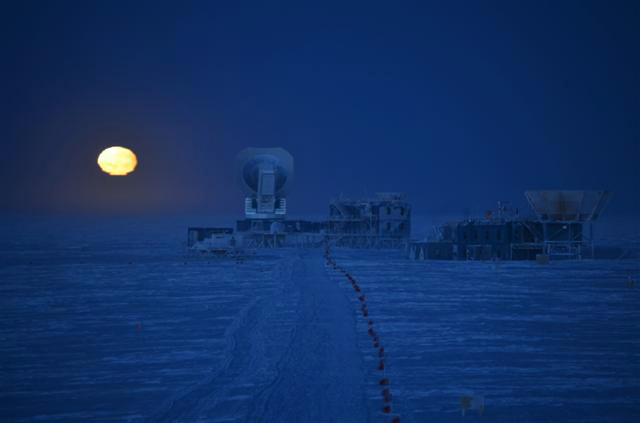Cold frontSouth Pole hits minus 100F mark earliest ever in the winterPosted April 20, 2012
It’s no secret that the South Pole in Antarctica is one of the coldest places on Earth. But this year it got really cold faster than ever, breaking a 30-year-old record for the earliest the temperature has dropped below minus 100 degrees Fahrenheit (minus 73.3 degrees Celsius). The mercury officially bottomed out at minus 100.1F (minus 73.4C) on April 7 (local time), less than three weeks after the one sunset of the year that occurs at the bottom of the world. Previously, the earliest the temperature had broken the minus 100F barrier was on April 8, 1982 (local time), plummeting down to minus 103.4F (minus 75.2C). “Climatology shows that it isn’t as atypical as one would think,” said South Pole Station Herschlag said that there have been eight instances where the station has reached the minus 100F milestone in the month of April, with another 13 “close calls,” when the temperature was just a degree or two shy of the mark. On average, the station typically experiences the first minus 100F day by May. The coldest months are June and July, according to Herschlag. The coldest day ever recorded at the South Pole was on June 23, 1982, hitting minus 117F (minus 82.8C). The average annual temperature is about minus 58F (minus 50C). Climate records at the South Pole began in 1957. “For the most part, the pattern that set up last week was typical for minus 100F readings,” Herschlag explained. “Typically, in order to get that cold, we would need grid easterly winds for a sustained period of 24-48 hours at a minimum. “This pushes the pool of coldest continental air from the Antarctic plateau into the South Pole,” he added. “We had been predominantly in the upper 80s to around 90 below zero F for almost a week leading up to this event.” The record comes less than four months after an altogether different mark was set at the South Pole during the austral summer. On Christmas Day, the temperature officially hit 9.9F (minus 12.3C) at about 3:50 p.m., to become the warmest day ever at the South Pole. That had shattered the old record of 7.5F (minus 13.6C) set on Dec. 27, 1978. [See previous article — Heat wave: South Pole hits record high temperature on Christmas Day.] Herschlag said that it is not entirely uncommon to have such wild swings in Antarctica during seasonal transitions. In March, temperatures were actually about three degrees Celsius above normal, with three daily maximum temperature records broken. It was also extremely windy, with peak wind speeds knocking down six daily records during the month. In fact, just last September, another significant record fell when the peak wind speed was clocked at 58 miles per hour (mph), or 50 knots — the strongest ever at the South Pole. The previous record of 55mph (48kts) was set on Aug. 24, 1989. [See previous article — Windy days: Pole storms bring record-breaking gusts in September.] The minus 100F barrier also marks the time when Polies wintering over get an opportunity to join the exclusive 300 Club. Membership involves sweating it out in a sauna at 200F for as long as possible and then making a quick trip to the geographic South Pole — all while wearing not much more than a pair of boots. Herschlag said about a dozen of the 50 winter-overs joined the club for the couple of hours while the temperature fluctuated at the membership level. |



For USAP Participants |
For The Public |
For Researchers and EducatorsContact UsU.S. National Science FoundationOffice of Polar Programs Geosciences Directorate 2415 Eisenhower Avenue, Suite W7100 Alexandria, VA 22314 Sign up for the NSF Office of Polar Programs newsletter and events. Feedback Form |



